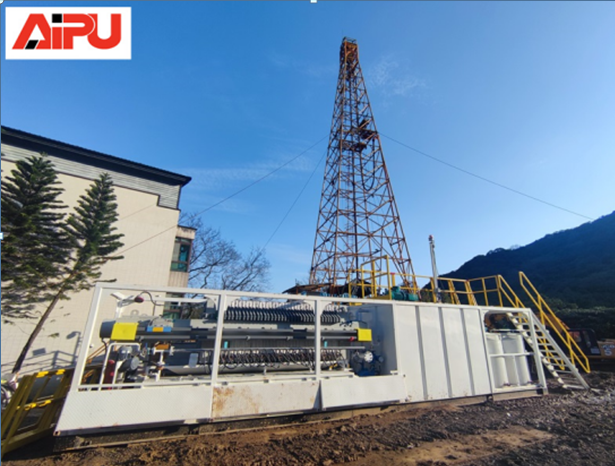Why Custom - built is the Best Choice
Drilling operations are complex and costly endeavors, and one of the significant challenges faced is the loss of drilling fluid. A well - designed solids control system plays a crucial role in minimizing these losses, ensuring cost - effectiveness and environmental compliance. This article explores various aspects of the solids control system in reducing drilling fluid losses.
Understanding Drilling Fluid Losses
Drilling fluid, also known as drilling mud, serves multiple purposes in the drilling process. It cools and lubricates the drill bit, carries cuttings to the surface, and helps maintain wellbore stability. However, losses can occur due to various reasons. Seepage into the formation is a common cause, especially in porous or fractured rock layers. Additionally, improper handling and inefficient separation of solids can lead to excessive fluid being discarded along with the cuttings. Understanding these loss mechanisms is the first step in implementing effective control measures.
Components of a Solids Control System
A typical solids control system consists of several key components. The shale shaker is the first line of defense. It uses vibrating screens to separate large cuttings from the drilling fluid. After the shale shaker, the desander and desilter come into play. These hydrocyclone - based devices remove medium - sized solids. The centrifuge is another important component, which can separate fine solids from the fluid through high - speed rotation. Each component is designed to work in sequence, gradually removing solids of different sizes and preventing unnecessary fluid loss.
Benefits of Minimizing Drilling Fluid Losses
Minimizing drilling fluid losses offers numerous benefits. Economically, it reduces the cost of purchasing and disposing of drilling fluid. Since drilling fluid can be quite expensive, especially high - performance formulations, reducing losses directly impacts the bottom line. Environmentally, it helps in reducing the volume of waste generated. Drilling fluid waste can contain harmful substances, and by minimizing losses, the potential for environmental contamination is also reduced. Moreover, maintaining the proper composition of the drilling fluid through effective solids control enhances the overall efficiency of the drilling operation.
Best Practices for Solids Control
To achieve optimal solids control and minimize fluid losses, several best practices should be followed. Regular maintenance of the solids control equipment is essential. This includes checking and replacing worn - out screens on the shale shaker, ensuring proper operation of the hydrocyclones, and maintaining the centrifuge. Operators should also monitor the properties of the drilling fluid continuously. By adjusting the flow rate, density, and viscosity of the fluid, they can improve the efficiency of the solids separation process. Additionally, training the drilling crew on the proper use and maintenance of the solids control system is crucial for its effective operation.
In conclusion, a well - functioning solids control system is vital for minimizing drilling fluid losses. By understanding the causes of losses, utilizing the right components, reaping the benefits, and following best practices, drilling operations can become more cost - effective, environmentally friendly, and efficient.

Understanding Drilling Fluid Losses
Drilling fluid, also known as drilling mud, serves multiple purposes in the drilling process. It cools and lubricates the drill bit, carries cuttings to the surface, and helps maintain wellbore stability. However, losses can occur due to various reasons. Seepage into the formation is a common cause, especially in porous or fractured rock layers. Additionally, improper handling and inefficient separation of solids can lead to excessive fluid being discarded along with the cuttings. Understanding these loss mechanisms is the first step in implementing effective control measures.
Components of a Solids Control System
A typical solids control system consists of several key components. The shale shaker is the first line of defense. It uses vibrating screens to separate large cuttings from the drilling fluid. After the shale shaker, the desander and desilter come into play. These hydrocyclone - based devices remove medium - sized solids. The centrifuge is another important component, which can separate fine solids from the fluid through high - speed rotation. Each component is designed to work in sequence, gradually removing solids of different sizes and preventing unnecessary fluid loss.
Benefits of Minimizing Drilling Fluid Losses
Minimizing drilling fluid losses offers numerous benefits. Economically, it reduces the cost of purchasing and disposing of drilling fluid. Since drilling fluid can be quite expensive, especially high - performance formulations, reducing losses directly impacts the bottom line. Environmentally, it helps in reducing the volume of waste generated. Drilling fluid waste can contain harmful substances, and by minimizing losses, the potential for environmental contamination is also reduced. Moreover, maintaining the proper composition of the drilling fluid through effective solids control enhances the overall efficiency of the drilling operation.
Best Practices for Solids Control
To achieve optimal solids control and minimize fluid losses, several best practices should be followed. Regular maintenance of the solids control equipment is essential. This includes checking and replacing worn - out screens on the shale shaker, ensuring proper operation of the hydrocyclones, and maintaining the centrifuge. Operators should also monitor the properties of the drilling fluid continuously. By adjusting the flow rate, density, and viscosity of the fluid, they can improve the efficiency of the solids separation process. Additionally, training the drilling crew on the proper use and maintenance of the solids control system is crucial for its effective operation.
In conclusion, a well - functioning solids control system is vital for minimizing drilling fluid losses. By understanding the causes of losses, utilizing the right components, reaping the benefits, and following best practices, drilling operations can become more cost - effective, environmentally friendly, and efficient.








